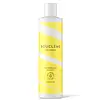What's inside
What's inside
 Key Ingredients
Key Ingredients

 Benefits
Benefits

 Concerns
Concerns

 Ingredients Side-by-side
Ingredients Side-by-side

Water
Skin ConditioningAloe Barbadensis Sprout
HumectantHydroxyethylcellulose
Emulsion StabilisingMaltodextrin/Vp Copolymer
Potassium Hydroxide
BufferingGluconolactone
Skin ConditioningSodium Benzoate
MaskingCalcium Gluconate
HumectantAcrylates/C10-30 Alkyl Acrylate Crosspolymer
Emulsion StabilisingCitrus Aurantium Dulcis Peel Oil
MaskingCaprylic/Capric Triglyceride
MaskingPotassium Sorbate
PreservativeSodium Phytate
Glycerin
HumectantChamomilla Recutita Flower Extract
MaskingEucalyptus Globulus Leaf Extract
PerfumingGinkgo Biloba Leaf Extract
Skin ConditioningAspalathus Linearis Leaf Extract
Skin ConditioningHoney Extract
HumectantLimonene
PerfumingWater, Aloe Barbadensis Sprout, Hydroxyethylcellulose, Maltodextrin/Vp Copolymer, Potassium Hydroxide, Gluconolactone, Sodium Benzoate, Calcium Gluconate, Acrylates/C10-30 Alkyl Acrylate Crosspolymer, Citrus Aurantium Dulcis Peel Oil, Caprylic/Capric Triglyceride, Potassium Sorbate, Sodium Phytate, Glycerin, Chamomilla Recutita Flower Extract, Eucalyptus Globulus Leaf Extract, Ginkgo Biloba Leaf Extract, Aspalathus Linearis Leaf Extract, Honey Extract, Limonene
Water
Skin ConditioningGlycerin
HumectantAloe Barbadensis Leaf Extract
EmollientXanthan Gum
EmulsifyingPolyglyceryl-4 Caprate
EmulsifyingPunica Granatum Fruit Extract
AntioxidantArgania Spinosa Kernel Oil
EmollientLinum Usitatissimum Seed Oil
PerfumingCocos Nucifera Oil
MaskingCitrus Aurantium Bergamia Fruit Oil
MaskingCitrus Grandis Peel Oil
MaskingTilia Cordata Oil
MaskingLitsea Cubeba Fruit Oil
MaskingMichelia Alba Flower Oil
MaskingMichelia Alba Leaf Oil
MaskingCitrus Nobilis Peel Oil
MaskingOriganum Majorana Leaf Oil
MaskingCitrus Aurantium Dulcis Peel Oil
MaskingCymbopogon Martini Oil
MaskingPogostemon Cablin Leaf Oil
MaskingRosmarinus Officinalis Leaf Oil
MaskingMentha Viridis Leaf Oil
AstringentStyrax Tonkinensis Resin Extract
PerfumingRicinus Communis Seed Oil
MaskingBenzyl Alcohol
PerfumingDehydroacetic Acid
PreservativeLimonene
PerfumingLinalool
PerfumingGeraniol
PerfumingCitral
PerfumingBenzyl Benzoate
AntimicrobialWater, Glycerin, Aloe Barbadensis Leaf Extract, Xanthan Gum, Polyglyceryl-4 Caprate, Punica Granatum Fruit Extract, Argania Spinosa Kernel Oil, Linum Usitatissimum Seed Oil, Cocos Nucifera Oil, Citrus Aurantium Bergamia Fruit Oil, Citrus Grandis Peel Oil, Tilia Cordata Oil, Litsea Cubeba Fruit Oil, Michelia Alba Flower Oil, Michelia Alba Leaf Oil, Citrus Nobilis Peel Oil, Origanum Majorana Leaf Oil, Citrus Aurantium Dulcis Peel Oil, Cymbopogon Martini Oil, Pogostemon Cablin Leaf Oil, Rosmarinus Officinalis Leaf Oil, Mentha Viridis Leaf Oil, Styrax Tonkinensis Resin Extract, Ricinus Communis Seed Oil, Benzyl Alcohol, Dehydroacetic Acid, Limonene, Linalool, Geraniol, Citral, Benzyl Benzoate
Alternatives
Ingredients Explained
These ingredients are found in both products.
Ingredients higher up in an ingredient list are typically present in a larger amount.
Citrus Aurantium Dulcis Peel Oil is oil from the peel of an orange fruit.
Limonene and linalool make up the majority of oils from citrus peels. Limonene has a "citrus" fragrance. Citrus peels also contain flavonoids, which have anti-inflammatory properties.
Citrus peel is also a rich source of flavonoids. Flavonoids are natural antioxidants and help protect your skin against damage. Flavonoids are a group of compounds naturally found in vegetables and fruits.
The term 'fragrance' is not regulated in many countries. In many cases, it is up to the brand to define this term. For instance, many brands choose to label themselves as "fragrance-free" because they are not using synthetic fragrances. However, their products may still contain ingredients such as essential oils that are considered a fragrance.
Learn more about Citrus Aurantium Dulcis Peel OilGlycerin is already naturally found in your skin. It helps moisturize and protect your skin.
A study from 2016 found glycerin to be more effective as a humectant than AHAs and hyaluronic acid.
As a humectant, it helps the skin stay hydrated by pulling moisture to your skin. The low molecular weight of glycerin allows it to pull moisture into the deeper layers of your skin.
Hydrated skin improves your skin barrier; Your skin barrier helps protect against irritants and bacteria.
Glycerin has also been found to have antimicrobial and antiviral properties. Due to these properties, glycerin is often used in wound and burn treatments.
In cosmetics, glycerin is usually derived from plants such as soybean or palm. However, it can also be sourced from animals, such as tallow or animal fat.
This ingredient is organic, colorless, odorless, and non-toxic.
Glycerin is the name for this ingredient in American English. British English uses Glycerol/Glycerine.
Learn more about GlycerinLimonene is a fragrance that adds scent and taste to a formulation.
It's found in the peel oil of citrus fruits and other plants such as lavender and eucalyptus. The scent of limonene is generally described as "sweet citrus".
Limonene acts as an antioxidant, meaning it helps neutralize free radicals.
When exposed to air, oxidized limonene may sensitize the skin. Because of this, limonene is often avoided by people with sensitive skin.
The term 'fragrance' is not regulated in many countries. In many cases, it is up to the brand to define this term. For instance, many brands choose to label themselves as "fragrance-free" because they are not using synthetic fragrances. However, their products may still contain ingredients such as essential oils that are considered a fragrance.
Learn more about LimoneneWater. It's the most common cosmetic ingredient of all. You'll usually see it at the top of ingredient lists, meaning that it makes up the largest part of the product.
So why is it so popular? Water most often acts as a solvent - this means that it helps dissolve other ingredients into the formulation.
You'll also recognize water as that liquid we all need to stay alive. If you see this, drink a glass of water. Stay hydrated!
Learn more about Water